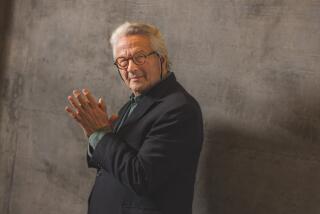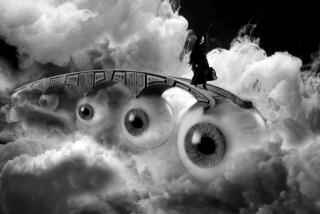The Set Was a Zoo, the Actors Were Animals
- Share via
Talk about a pigsty. Imagine 799 animals in close quarters for 10 months. Welcome to “Babe: Pig in the City,” one monumental production that put a whole new spin on the term “closed set.”
From beginning to end, creating the George Miller-directed sequel to the blockbuster family hit was no easy task. A benefit screening of the film had to be canceled because the print wasn’t ready in time. The film was released Wednesday.
When the “Babe” crew hit Australia, it found itself facing a six-month quarantine for the imported animals. Because of the quarantine (and to avoid unwanted publicity), the filmmakers then decided to bar outsiders from the shoot at the old Sydney Showgrounds.
But that’s just part of the story. Here’s a look at what it took to put together the sequel:
ARE YOU LONESOME TONIGHT? Not! At least for the six “singing” mice belting out Elvis and Edith Piaf that found their coed quarters more than a little cozy; their numbers grew to 100 within weeks of filming. Seems mice have quite a romantic streak. “They made rabbits look like pikers!” “Babe” spokesman Johnny Friedkin said. “We had to fix that lifestyle and fast. Otherwise, we were looking at 1,000-plus by the time the film wrapped.”
GIMME SHELTER. Of the 120 pooches that paraded through parts in this film, more than half came from dog shelters in the Sydney area. By the end of the shoot, cast and crew just couldn’t say goodbye. So they packed up the 75 mutts and headed home. Even director George Miller became the proud parent of a Chihuahua.
THAT’S A LOT OF PIG SLOP. Here’s a recap of what it took for Babe’s trip to the city: 600 crew members, 26,500 balloons, 1,200 extras, 50 ducks, 80 pigeons, 100 pigs, 130 cats, 50 animal trainers and several hundred pounds of food a day. Estimated cost of the film: $100 million.
CREATIVE DIFFERENCES. Before cameras began to roll, Miller and company had to find out whether chimps and pigs worked and played well together, especially because chimps were an integral part of the sequel. So animal supervisor Karl Miller and trainer Steve Martin cooked up a plan. One baby pig was kept in a pen at the farm near the chimps so the primates could familiarize themselves with the swine, while Miller trained another off site. After a few weeks, the trainers swapped pigs.
“The trained pig knows to go to his mark. He would get miffed when the chimps were on it, so he’d root them off,” said Martin, who runs Working Wildlife Ranch in the San Fernando Valley. “Then there was Charley [an 18-month-old chimp], who plays Easy in the film. He’d just stand there and put his hand out for the little pig to stop. The little pig would look at him for a minute, then walk over and start sucking on Charley’s finger like a bottle. It was pretty amazing to watch. Their impasse had reached an accord.”
RATSO FERDY. For fans of Ferdinand, a.k.a. “Ferdy” the Duck: Ever wonder who was the inspiration for Babe’s plucky, neurotic pal? Try Dustin Hoffman’s Ratso Rizzo of “Midnight Cowboy.” It was that nasally, edgy way he had about him that stuck in the brain of Danny Mann (the voice of Ferdy) when he came face to face with the duck in the first “Babe.” “The first time I went to Australia, I felt, smelt and really got to know the little guy,” Mann said. “For some reason, Ratso just stuck, and it’s been that way since.”
A HOUSE OF CARDS. After “Babe,” the set for Farmer Hoggett’s unusual farm was ripped from its rafters. No one anticipated the film being a runaway hit. For production designer Roger Ford of Sydney, “it was like giving rebirth. We were thrilled we had all the drawings, and put it up fast. But when we got it up, we realized we had improvised but didn’t note the changes. We were practically back to square one. We won’t tear it down so quickly this time. We will wait to see if round three could be in the works.”
BEYOND THUNDERDOME. Miller, the director of “Mad Max” and its sequels “The Road Warrior” and “Mad Max: Beyond Thunderdome,” fell in love with the idea of making a movie with pigs from the “Thunderdome” film. “I’d used a number of pigs in the film and remembered them as affectionate, responsive and remarkably bright,” the filmmaker said. “You could make them roll over and scratch their bellies. They were the pets of the crew. It did influence my decision.”
GOING ALL THE WAY. The cry from many a youngster leaving the theater after seeing “Babe” was that they’d never eat meat again. They were not alone. James Cromwell, the 6-foot-7 actor who plays Farmer Arthur Hoggett, became a vegan--that’s a strict vegetarian who eats no animal byproducts, including honey, after the first film.
More to Read
Only good movies
Get the Indie Focus newsletter, Mark Olsen's weekly guide to the world of cinema.
You may occasionally receive promotional content from the Los Angeles Times.








